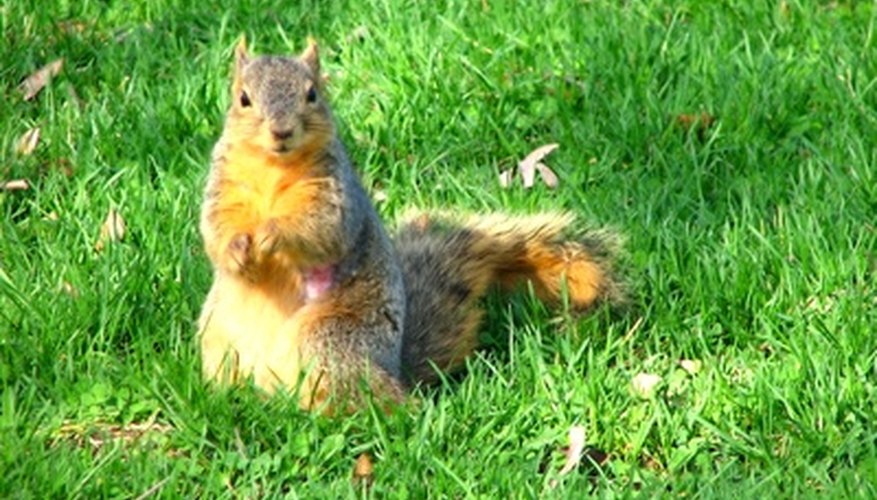Sweetcorn provides a productive crop in the home vegetable garden, but squirrels can quickly decimate the crop. Squirrels don't just eat the maturing corn on the stalks, they also dig up the planted seeds and eat those. The crop must be protected from these pests both at planting and as the corn cobs are forming. In small home gardens, excluding squirrels from the area is the best form of control. Most squirrel control measures also keep birds and other animals from damaging the sweetcorn.
- Sweetcorn provides a productive crop in the home vegetable garden, but squirrels can quickly decimate the crop.
- The crop must be protected from these pests both at planting and as the corn cobs are forming.
Cover the garden bed with chicken wire that has 1-inch mesh openings. Cover the edges of the mesh with soil so the squirrels cannot lift and burrow under it to reach the newly planted corn seeds.
Install a stake in each corner of the corn bed. Use stakes that are at least 1 foot taller than the mature height of the corn variety you are growing.
Wrap chicken wire around the stakes once the corn cobs begin forming. Secure the chicken wire to the stakes with wire.
Bury the bottom 4 to 6 inches of the chicken wire in the soil to prevent the squirrels from burrowing under it. Leave one edge of the fence unburied so you can untwist the wires from the stake for use as a gate for tending the corn bed.
- Install a stake in each corner of the corn bed.
- Bury the bottom 4 to 6 inches of the chicken wire in the soil to prevent the squirrels from burrowing under it.
Drape bird netting over the top of the chicken wire enclosure to prevent squirrels from climbing over the fence. Secure the edges of the bird netting to the chicken wire with short lengths of wire.
TIP
Live traps are available for squirrel control. These work best if you have a low squirrel population in your area.
WARNING
Avoid the use of poisons in squirrel control, as these poisons can also kill pets and other desirable animals.
